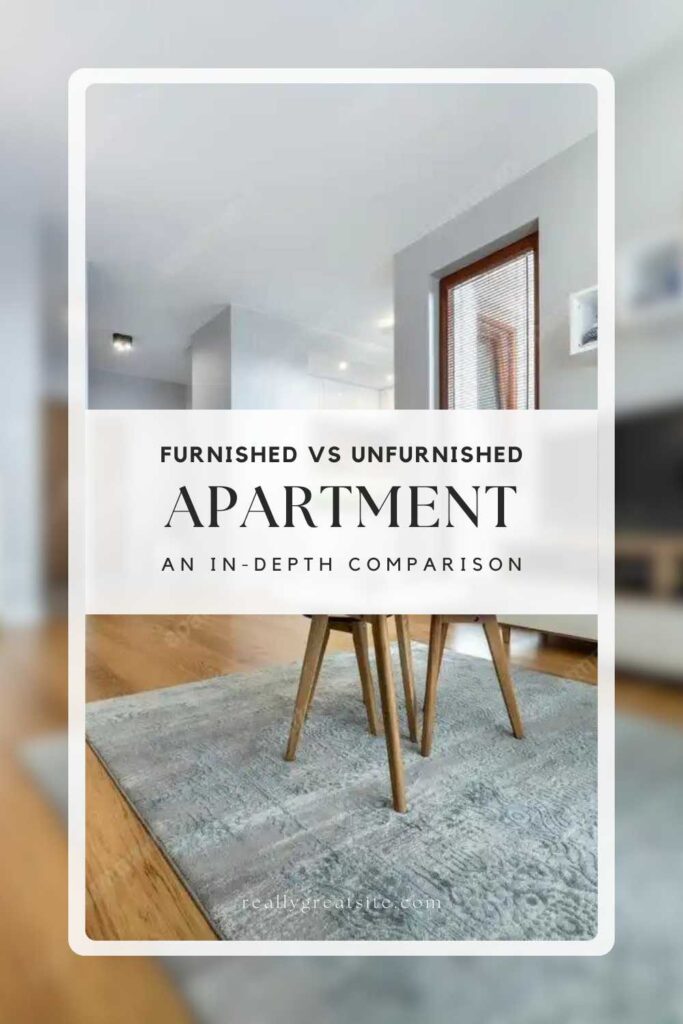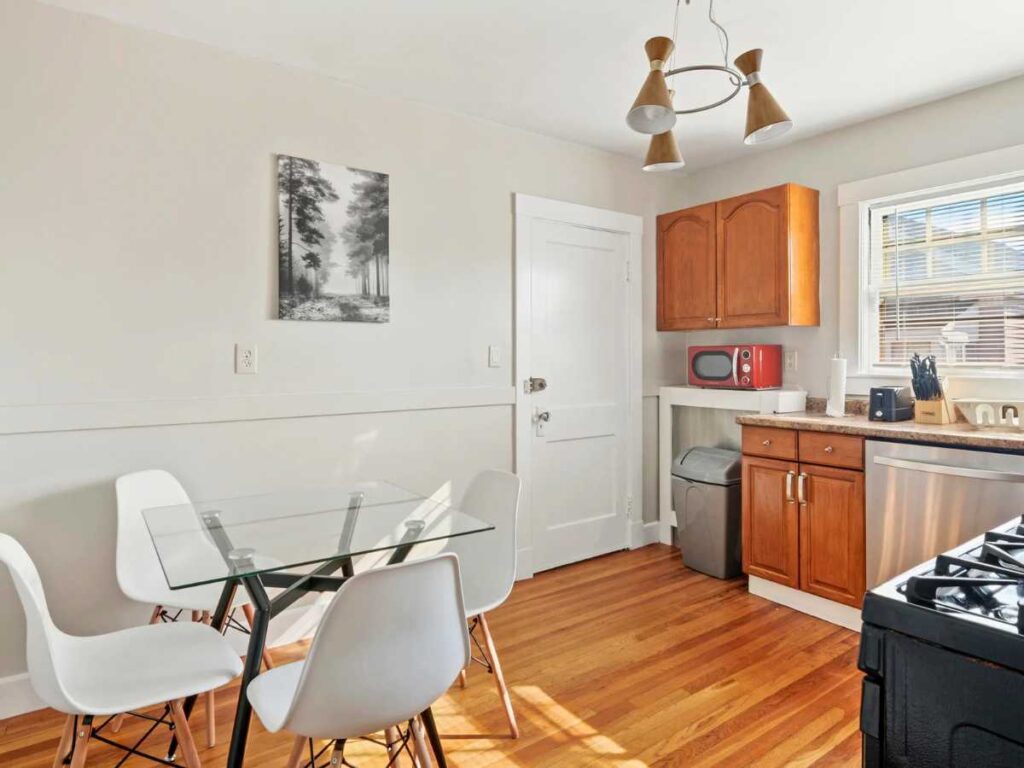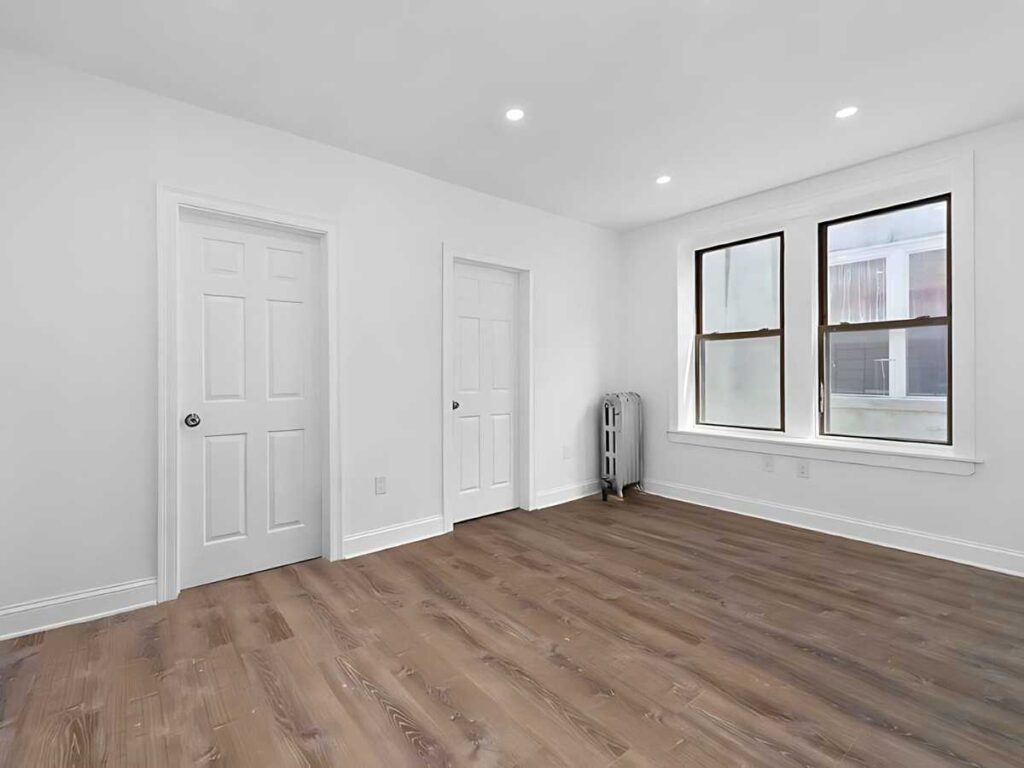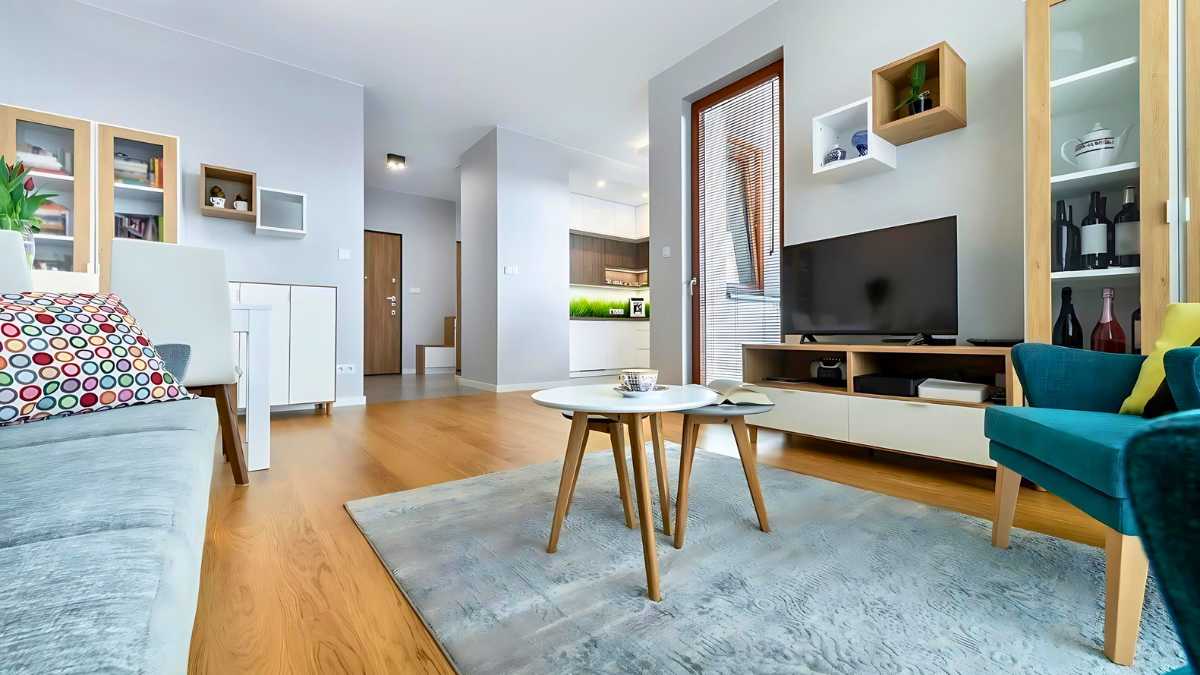When deciding between furnished vs unfurnished apartments, it’s essential first to understand what’s included in each type. This knowledge sets the stage for evaluating cost, flexibility, decor, and other considerations. Additionally, the often-overlooked category of semi-furnished apartments can offer a middle ground between the two extremes.

Table of Contents
What’s Included in a Furnished Apartment?

A furnished apartment is move-in ready, offering everything you need to live comfortably without purchasing furniture or essential household items. Typically, a furnished apartment includes:
- Living Room: Sofa, coffee table, side tables, lamps, and sometimes a TV.
- Bedroom: Bed frame, mattress, nightstands, dresser, and possibly bed linens.
- Dining Area: Dining table with chairs, which may be part of an open-plan living space.
- Kitchen: Essential appliances (stove, refrigerator, microwave) and sometimes cookware, dishes, utensils, and small appliances like a toaster or coffee maker.
- Bathroom: Basic necessities like a shower curtain, mirror, and sometimes towels.
- Additional Items: Some furnished apartments may also include decor, like artwork, rugs, and window treatments.
While these are standard inclusions, the exact contents can vary depending on the landlord, location, and rent price. It’s crucial to review the inventory before signing a lease to ensure the apartment meets your expectations.
What About Semi-Furnished Apartments?
A semi-furnished apartment offers a compromise between fully furnished and unfurnished options. These units typically include only essential items, such as:
- Basic Furniture: Bed frame and mattress, a sofa or seating arrangement, and a dining table.
- Major Appliances: Refrigerator, stove, and sometimes a washing machine or dryer.
- Lighting Fixtures: Essential overhead lights and sometimes lamps.
Semi-furnished apartments provide more flexibility than fully furnished units, allowing you to bring your furniture or add personal touches without starting from scratch. They’re a good choice if you want some convenience without the restrictions of a fully furnished space.
Comparison of Furnished vs Unfurnished Apartments

Now that we’ve covered what’s typically included in furnished and semi-furnished apartments, let’s dive into the key considerations when choosing between a furnished vs an unfurnished space.
Cost Considerations
- Furnished Apartments: Furnished units usually have higher rent due to the convenience of being move-in ready. However, they can save you the upfront costs of buying furniture, which can add up quickly if you need to furnish an entire apartment from scratch.
- Unfurnished Apartments: Unfurnished apartments often come with lower rent, but you’ll need to factor in the cost of purchasing furniture. If you plan to stay long-term, this initial investment can be spread over time, potentially making an unfurnished unit more affordable in the long run.
Flexibility and Mobility
- Furnished Apartments: Ideal for those with a transient lifestyle, furnished apartments offer the flexibility to move in and out quickly. This makes them a popular choice for students, temporary workers, or anyone unsure of how long they’ll stay in one place.
- Unfurnished Apartments: If you’re looking for stability, an unfurnished apartment allows you to create a long-term home. You can tailor the space to your liking and aren’t tied to the decor choices made by someone else, which is important if you plan to stay for an extended period.
Decor and Personalization
- Furnished Apartments: Furnished units come with pre-selected furniture, which may or may not match your taste. While this can be convenient, it limits your ability to personalize the space. If you’re particular about your living environment, the lack of control over the decor can be a drawback.
- Unfurnished Apartments: Unfurnished apartments are a blank canvas. You have complete control over the look and feel of your home, from furniture to color schemes. This is ideal for those who want their space to reflect their style and personality.
Maintenance and Responsibility
- Furnished Apartments: With furnished apartments, the landlord typically maintains the furniture. This can reduce your maintenance responsibilities, but you may be liable for damages beyond normal wear and tear. This could result in additional costs if anything gets damaged during your stay.
- Unfurnished Apartments: In an unfurnished apartment, you’re responsible for maintaining your furniture. While this adds to your responsibilities, it also gives you the freedom to replace or upgrade items as needed, without needing landlord approval.
Lease Length and Commitment
- Furnished Apartments: Furnished apartments often offer shorter lease terms, catering to tenants needing temporary housing. This flexibility can be a plus, but it often comes with higher rent due to the convenience of a shorter commitment.
- Unfurnished Apartments: Unfurnished apartments typically require longer leases, which might be preferable if you seek stability. Longer lease terms often result in lower monthly rent compared to furnished options, making them more cost-effective over time.
Ideal Tenants for Each Option
- Furnished Apartments: Perfect for people who move frequently, such as digital nomads, business travelers, or students. Furnished apartments also work well for those who prefer a turnkey solution without the hassle of buying or moving furniture.
- Unfurnished Apartments: Best for those planning to stay in one place for a while and wanting to invest in personalizing their home. Unfurnished units are also ideal for those who already own furniture or prefer to spread the cost of furnishing over time.
Conclusion: Which is Right for You?
Your choice between a furnished vs unfurnished apartment hinges on your lifestyle, budget, and long-term plans. If convenience, flexibility, and short-term arrangements are your priority, a furnished apartment may be your best option. On the other hand, if you value stability, personalization, and lower long-term costs, an unfurnished apartment likely makes more sense.
Understanding what’s included and carefully weighing these considerations will help you find a living situation that matches both your budget and your daily needs.








Leave a Comment